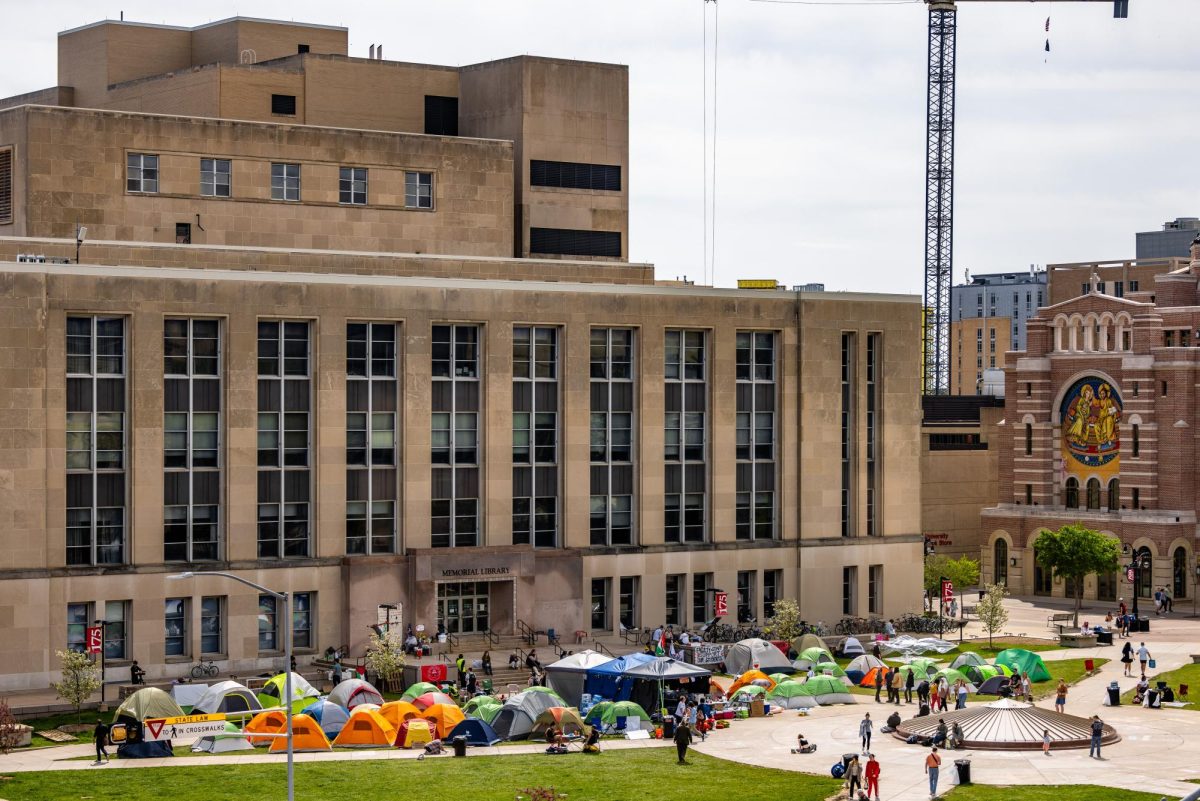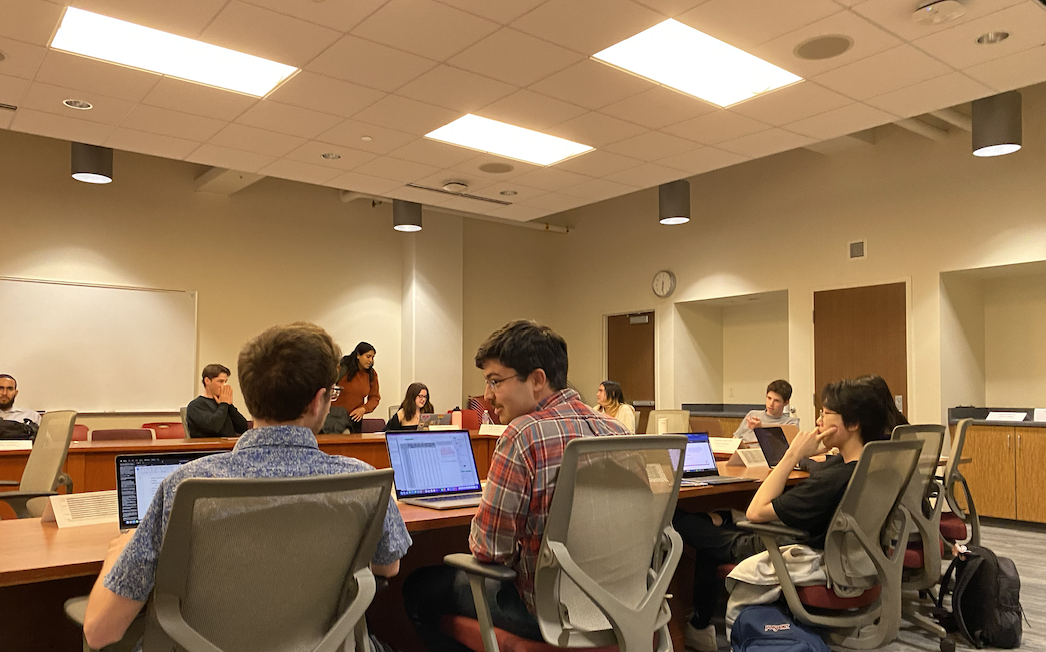Years of alleged atrocities against the workers of third world countries by sports apparel companies may soon be slowing to a halt as students and administrators at universities continue a tradition of joining forces against corporations.
For years, universities have made an effort to combat the poor working conditions of Nike, Adidas and Champion-supplied factories. A point where they believe sports apparel companies should be demonstrating their own social responsibility.
However, with pressure from students and campus communities, administrators have been forced to respond to the call for change where sports apparel companies have failed.
“There are people out there every day working in factories making products that bear our universities’ marks who are indeed working in abusive labor conditions — many of those conditions precipitated by the behavior of some American corporations,” said Jim Wilkerson, Duke University director of trademark licensing and stores operations.
Wilkerson added it was not acceptable for universities or students to be supportive of abusive conditions when they “espouse[d] education and truth and morality.”
There are enormous benefits for universities to be working together, since their collective bargaining power grows with each added university.
As University of Virgina student Victoria Young said, “We recognize that we’re part of a much bigger movement and have been working closely with national student organizers.”
Young, a member of UVA’s Workers and Students United group, added, “It’s exciting to know that students across the country are standing in solidarity with the workers at their campuses and also in sweatshops overseas.”
History
Student pressure has grown and changed since the late ’90s when large corporations like Nike came under the public spotlight for poor sweatshop conditions and failed to respond to the call of social responsibility.
In particular, the University of Wisconsin has been one of those leaders in a national trend to turn the traditional sports apparel company on its head.
“From the late ’90s when the movement first became very popular on campuses the University of Wisconsin has been at the forefront,” said LaMarr Billups, special assistant to UW chancellor John Wiley. “We had a lot of student activity and advocacy and some pretty serious demonstrations in the late ’90s.”
Response at UW began as early as 1997. However, issues became more heated in the summer of 1999 when students and residents protested the opening of The Gap on State Street.
Students pushed in October 1999 for UW to join the Worker Rights Consortium, a 153-member non-profit organization held together by a stronger code of conduct than past anti-sweatshop organizations. The consortium is responsible for monitoring factories overseas to guarantee strict adherence to the code of conduct.
In addition, Billups, who now serves as a consortium board member, noted the original code of conduct was written by a committee lead by UW members and involved operations like full wage and volume disclosure for foreign factories.
While joining the consortium was relatively effortless for UW, other universities did not experience such a welcoming effect.
The University of Oregon, which joined in 2000, was rescinded $30 million by then Nike CEO and UO alumnus Phil Knight.
“The University of Oregon, despite its unique relationship with Nike and Phil, is free to align itself with the Workers Rights Consortium. However, it does not mean that we are required to support those efforts with which we have fundamental disagreements,” a Nike statement said.
Despite high hopes for an effective Worker Rights Consortium, students and administrators were met with apparel companies shifting from designated “good” factories to worse factories with poorer working conditions, cheaper wages and more difficulty for the consortium in terms of monitoring.
Recent response, spearheaded by the United Students Against Sweatshops, comes in the form of the “Designated-Supplier Program”.
Forward. Thinking.
Unlike the Worker Rights Consortium, the Designated-Supplier Program would better prevent sports apparel companies from aiding serious crimes in foreign countries.
“The DSP, I think, holds a great deal of promise to actually make a real and lasting positive impact on the lives of workers,” Wilkerson said. “The current system of monitoring and enforcement are just not delivering what we initially expected.”
According to Billups, the DSP will require factories and suppliers to have unions, that brands pay the required price for a product such that it yields at least a living wage for workers. In addition, brands will only be able to source from suppliers who did at least two-thirds of their production from university logo products.
The last requirement would better provide stability for factories.
If all goes according to plan, Wilkerson, chair of the DSP working group and WRC board of directors, believes the proposal could be successful as force behind the group grows and student support continues.
“Quite frankly, if it were not for the students, in my opinion, it would be doubtful there would be such a tremendous amount of effort in organizing campaigns,” Wilkerson said.
At UW, student activity has been centered around the Student Labor Action Coalition, a group dedicated to reducing sweatshops and the amount of UW apparel created in sweatshops.
“It’s important for students to show solidarity within our community and people who make our clothes and other goods we consume because we do strongly believe our struggles are intertwined,” said SLAC member Liana Dalton. “If someone is being faced with injustice it’s sort of an obligation for us to support them.”
SLAC’s efforts came to some fruition when Wiley announced he would join a USAS-proposed initiative to reduce UW sports apparel created in sweatshops 25 percent last December. UW was the first university to join this pilot program.
Despite this, the relationship between SLAC and the UW administration has been relatively rocky.
In early March, SLAC members stormed Wiley’s office yelling ultimatums and demands that Wiley sign the proposal by March 24.
“I don’t think those tactics are particularly effective,” Wiley said in a March interview. “We do have a committee that has student representatives on it — including some of the students from SLAC — that sits down and really thinks about these issues and debates them … and that’s the body that I listen to on this issue.”
Nonetheless, Billups said it was probably a good thing SLAC did not give up pressure on the university.
“I fully expect students will keep up pressures and they probably should … they’re not always congruent as far as methodology, process or procedure and sometimes even timing,” Billups said. “Right now it’s a healthy relationship — one where I can depend on them to do certain things and they know they can depend on me.”
SLAC member Molly Glasgow reflected a similar opinion, “We really wanted to sign onto this, [the university] took a lot of pushing … [Billups] has become one of our best allies, we want to see the university stay at the pace they’re going.”
However, this isn’t the end of the line for most workers’ rights groups.
Rather, Duke senior Lillie Ris, who helps run Duke Students Against Sweatshops said, workers would now have to start speaking up.
“”I think it’s important that groups and universities are trying to be responsible and responsive and [are trying] to get information from people whose rights are being violated,” Ris said. “[Complaints] will need to come from folks that are living these realities.”
Nike and Adidas did not respond to e-mails or telephone calls before press time.
















